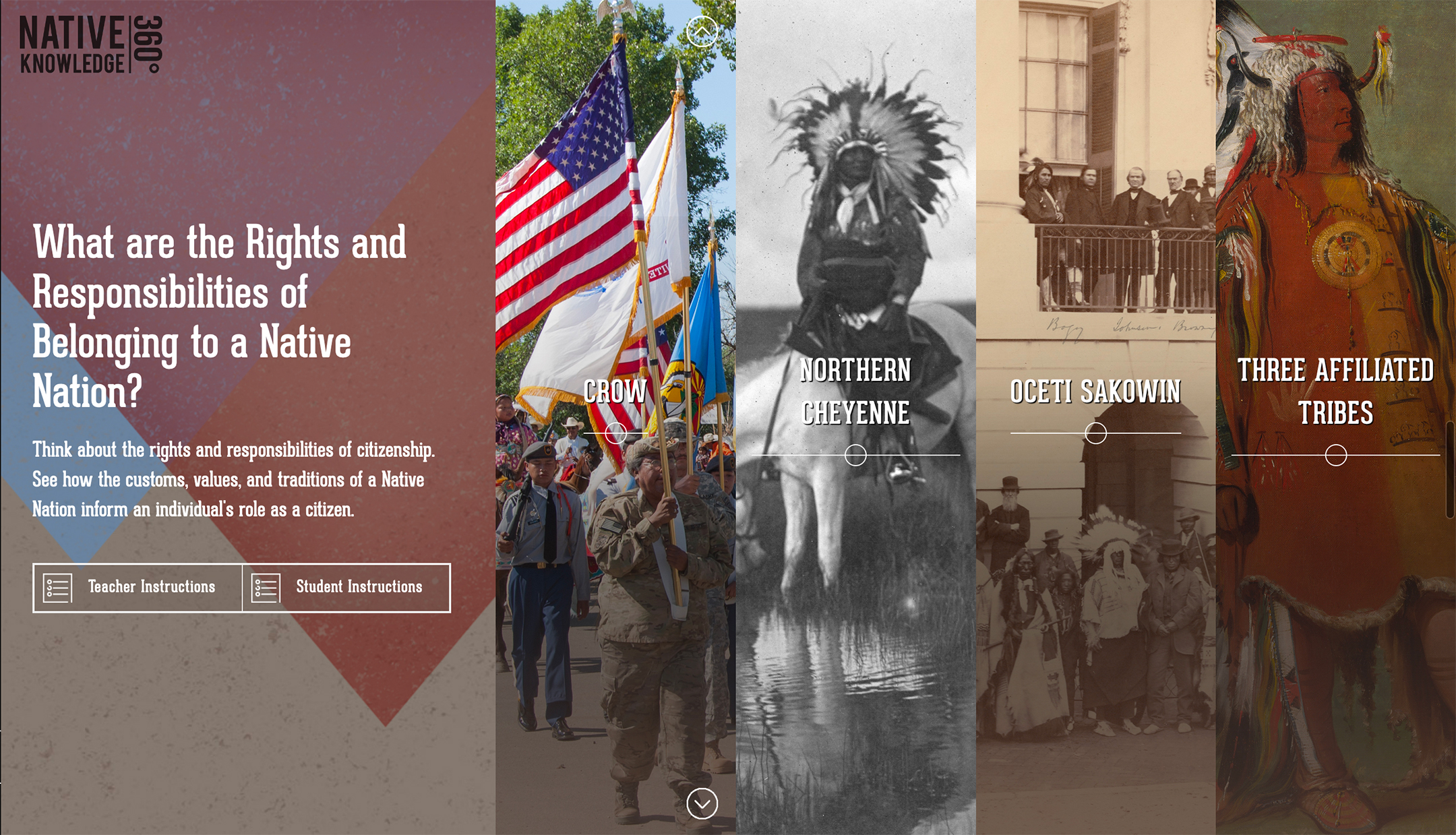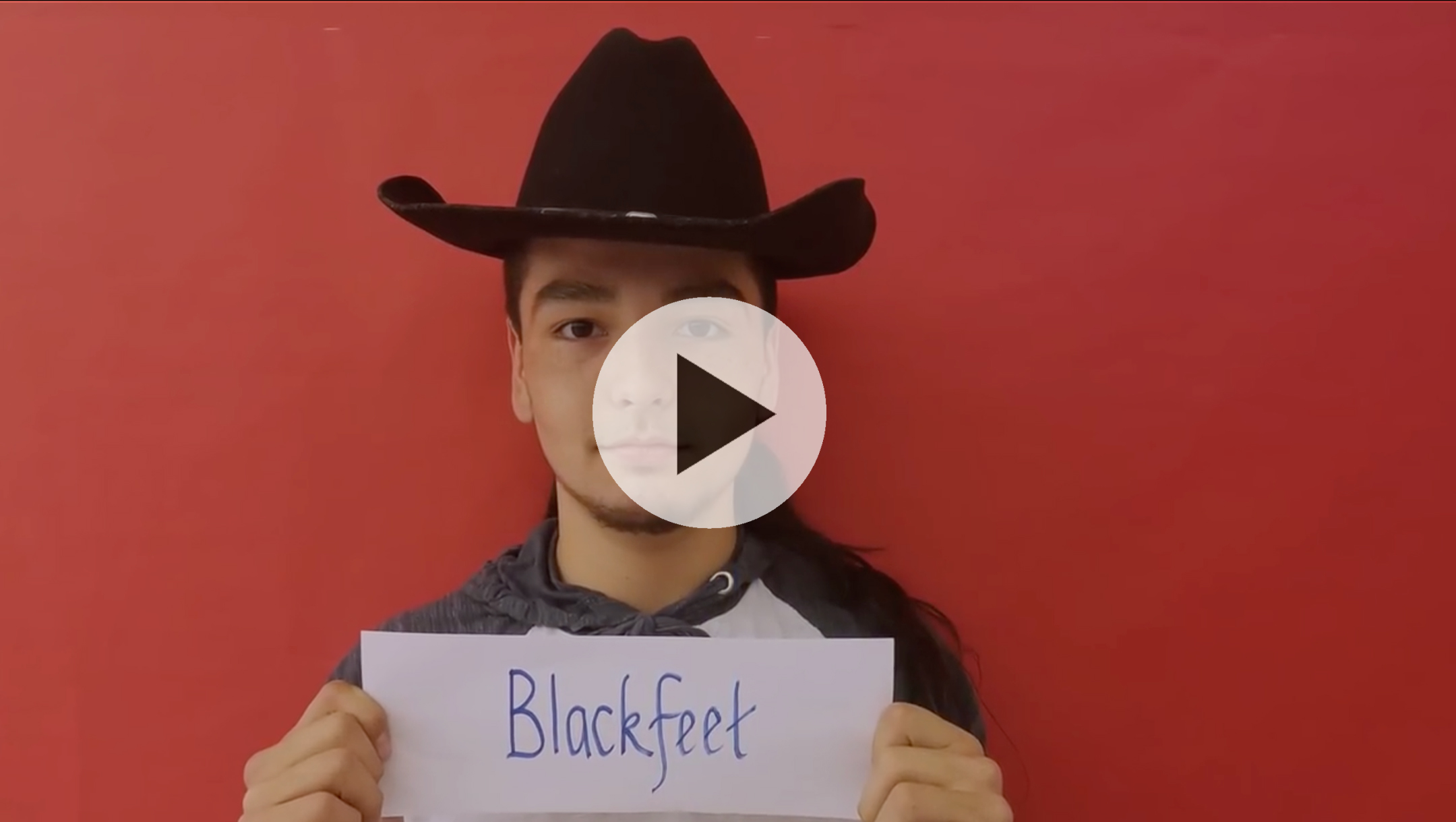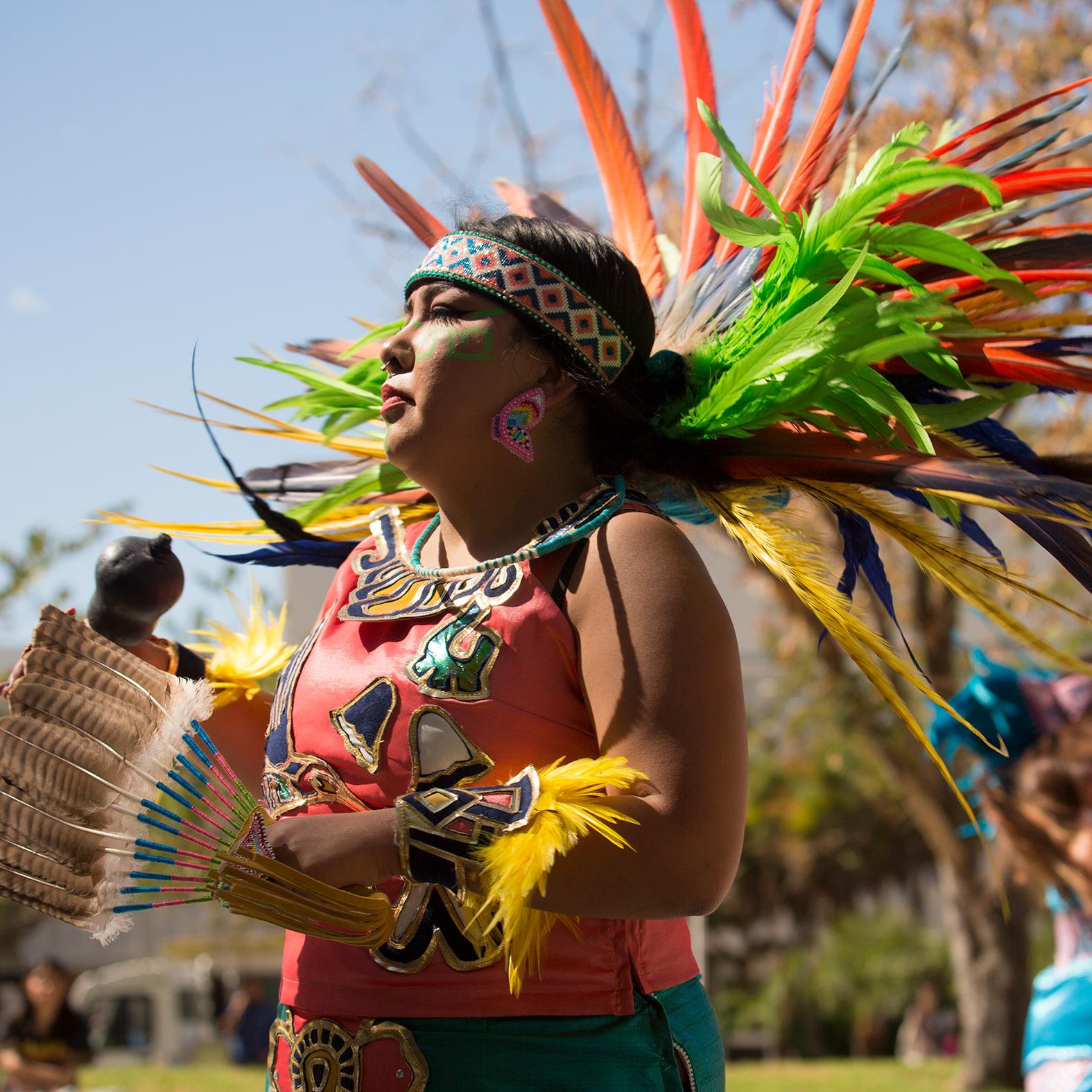
Handbook
Indigenous Peoples Day Resources for Every Classroom
Organizations from local school boards to the United Nations offer materials to make the most of the holiday
Indigenous Peoples Day will be celebrated this year at a moment of national reckoning with systemic racism and marginalization. Protests against police brutality in cities across the country have led to the toppling of statues, challenging of institutions, and long-overdue action on racially-insulting symbols. “I was shocked that the Washington football team changed its mascot,” Mandy Van Heuvelen tells The Elective. “I still am having a hard time believing that it happened or that it won't come back.”
Van Heuvelen, a member of the Cheyenne River Sioux Tribe, coordinates the Cultural Interpreter program at the Smithsonian’s National Museum of the American Indian (NMAI). The Washington team name change happened in July while NMAI was closed due to the global covid-19 pandemic, and, Van Heuvelen says, “I really wish we could have been there in that space to have these conversations because I think they would have been such rich conversations.”
Like many others, much of Van Heuvelen’s work moved online during the pandemic, with programming, discussions, and webinars happening virtually. (NMAI’s Washington, D.C., location has reopened, but most events are still happening remotely.) But even if some things were lost, new opportunities presented themselves.
“We're seeing educators who are reaching out and wanting to use our resources, educators we never had access to before, all over the United States,” Van Heuvelen says. “Something that's really exciting about this moment is that people are looking for ways to bring in these different perspectives and to really critically examine these issues. There's an openness and, I think, a sense of urgency and willingness for people to really listen.”
The pandemic is the other force impacting this year’s Indigenous Peoples Day, as students, teachers, and the general public have found how they learn, teach, and experience culture and history upended. But with the resources below—from NMAI, which co-hosted with Teaching for Change an Indigenous Peoples Day virtual teach-in in September, to other organizations, schools, and publications—no one has to miss out on the celebration. And, perhaps more importantly, they can find ways to extend Indigenous Peoples Day into their everyday lives.

National Museum of the American Indian
Native Knowledge 360° (National Museum of the American Indian)
This nationally-focused education program brings diverse perspectives and narratives into curriculum, with the goal of correcting, as much as possible, the inaccurate information about Native peoples that has made its way into public education over generations. "It brings in more complete narratives, Native perspectives, and primary sources into the classrooms so that students are able to get a diverse view of the history as well as present-day work that Indigenous communities are doing right now," Van Heuvelen says. Resources include full lesson plans, videos, handouts, teacher guides, microsites, and teaching posters.

Getty Images
How to Honor Indigenous Peoples with Your Kids, Today and Every Day (PBS SoCal)
"This Indigenous Peoples’ Day, commit to teaching children to make deep connections to the land and present-day Native nations, along with amplifying and learning about Indigenous heroes, artists, writers and musicians all year long," April Brown writes in this article published as part of PBS SoCal's At-Home Learning series. It provides a framework for learning about and teaching Indigenous heritage, history, and experience throughout the year. And while At-Home Learning is aimed at teaching kids ages 2–8, there are tools and takeaways (like disputing myths and having conversations about community and heritage) that can be applied to older learners, too.
Indigenous Peoples Day Resources (Seattle Public Schools)
With a focus on contemporary Native American and Washington State tribal history, the Seattle Public Schools' Native American Education Program staff has crafted and curated a collection of resources—videos, articles, read-alouds, and book lists—for Indigenous Peoples Day that can be used in classrooms from pre–K through 12th grade.

National Museum of the American Indian
Youth in Action: Conversations About Our Future (National Museum of the American Indian)
At 1 p.m. on Indigenous Peoples Day, NMAI will host a one-hour virtual program, Mascots, Monuments and Memorialization, featuring “young Native activists who are propelling this conversation forward and addressing the tension between history, memory, and current movements happening across America.” It’s part of the museum’s Youth in Action series, which highlights young Native activists and changemakers in conversations aimed at middle- and high-school students. If you miss the holiday webinar, or want to catch up on previous events, all the videos are archived on the museum’s YouTube channel.

United Nations
International Day of the World's Indigenous Peoples Resources Hub (United Nations)
This collection has a more global focus, with links, fact sheets, videos, and documents highlighting the culture, challenges, and status of the world’s Indigenous peoples. The concept of an Indigenous Peoples Day was first proposed at a United Nations event in 1977, and it’s important for students and teachers of all ages to remember that the struggle for Indigenous rights and identity is not just a concern for America’s Native peoples but for Native societies across the globe. And what better way to continue the conversation that begins on the second Monday in October than by opening it up to the whole planet?



